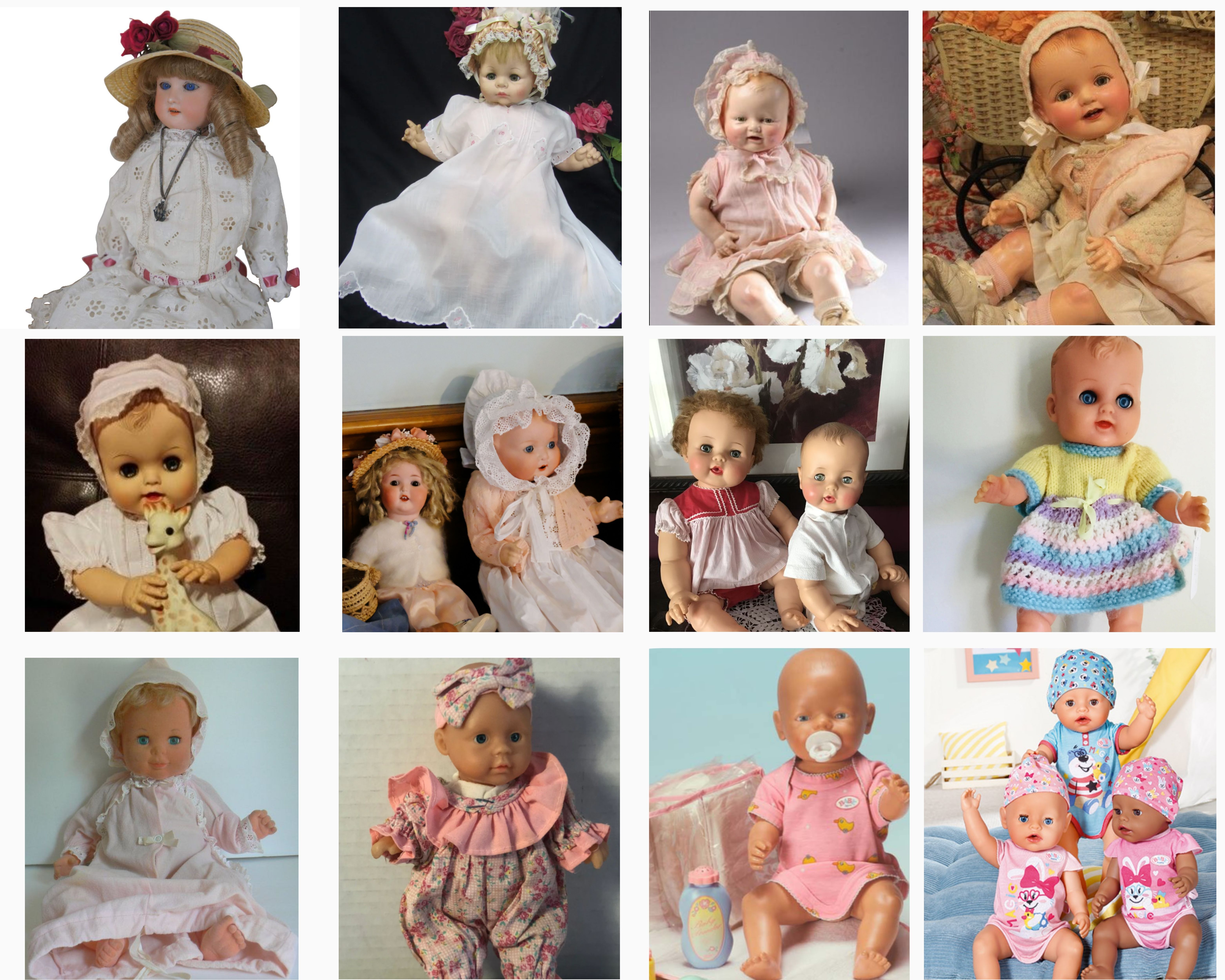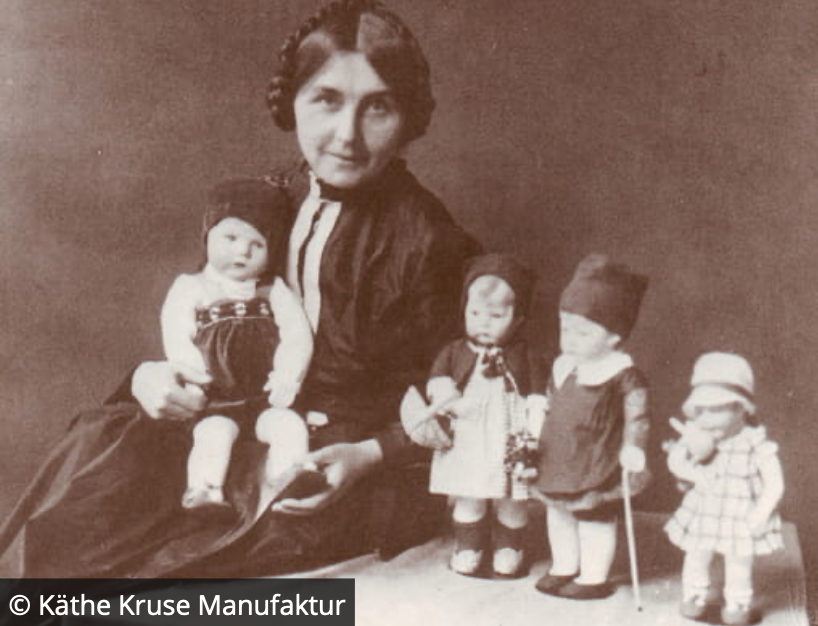
Baby dolls have existed since around ancient times and have evolved significantly (Chernaya, 2014). They were originally handmade from materials like fur, wood, leather, or bone. In the Victorian era, baby dolls became popular in Europe, often crafted from porcelain with unique details (Chernaya, 2014; Gonzalez, 2013). Queen Victoria's dolls were famously known to be made from expensive porcelain and stylish costumes, and had influence on fashion trends globally (Supprung, 2015).

Collage of the Evolving Baby Doll. This collage, created by the author, combines images sourced from multiple online platforms.
By the 19th century, baby dolls started being mass-produced, with French bébé dolls from the Jumeau toy company leading the way (Almeida, 2018). In the 20th century, baby dolls became a common household toy with features like crying, peeing, and speaking. The introduction of more realistic dolls was a significant development in the doll industry, particularly in Germany and other Western countries (Almeida, 2018). These dolls were child-friendly and resembled human babies more closely than earlier models.
Another key development was the production of plastic dolls. Plastic made manufacturing faster and more convenient, leading to increased mass production and making dolls more accessible to all, not just wealthy families (Nwokah, 2008). There has not only been a development of doll's material but also a development of the whole appaearance of dolls. German doll manufacturer Käthe Kruse played a crucial role in creating child-friendly dolls that closely resembled actual babies. The shift from rigid, decorative dolls to child-friendly, realistic-looking baby dolls marked a transformation in the doll industry (Ganaway, 2008).

Picture of Käthe Kruse with her dolls ( Aufbau Verlag, 2022)